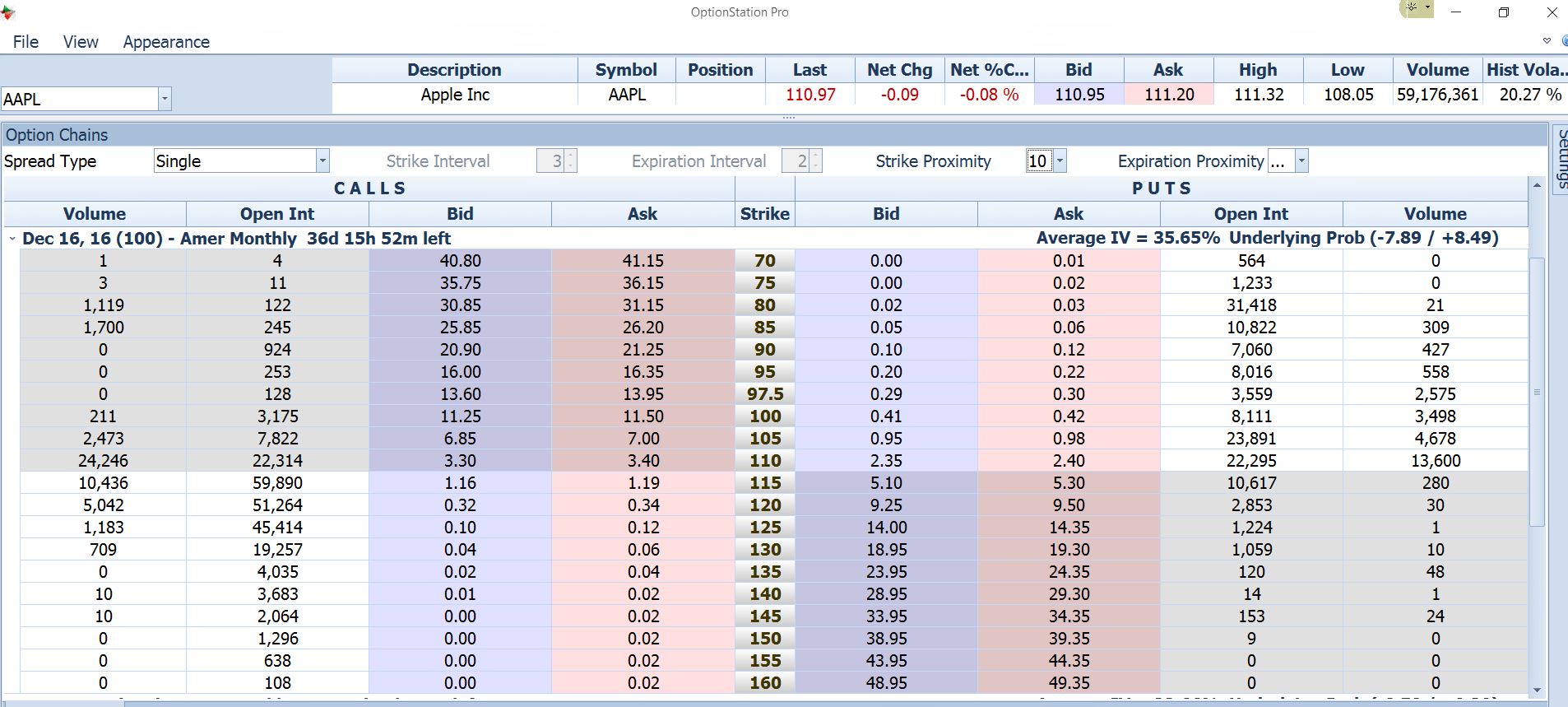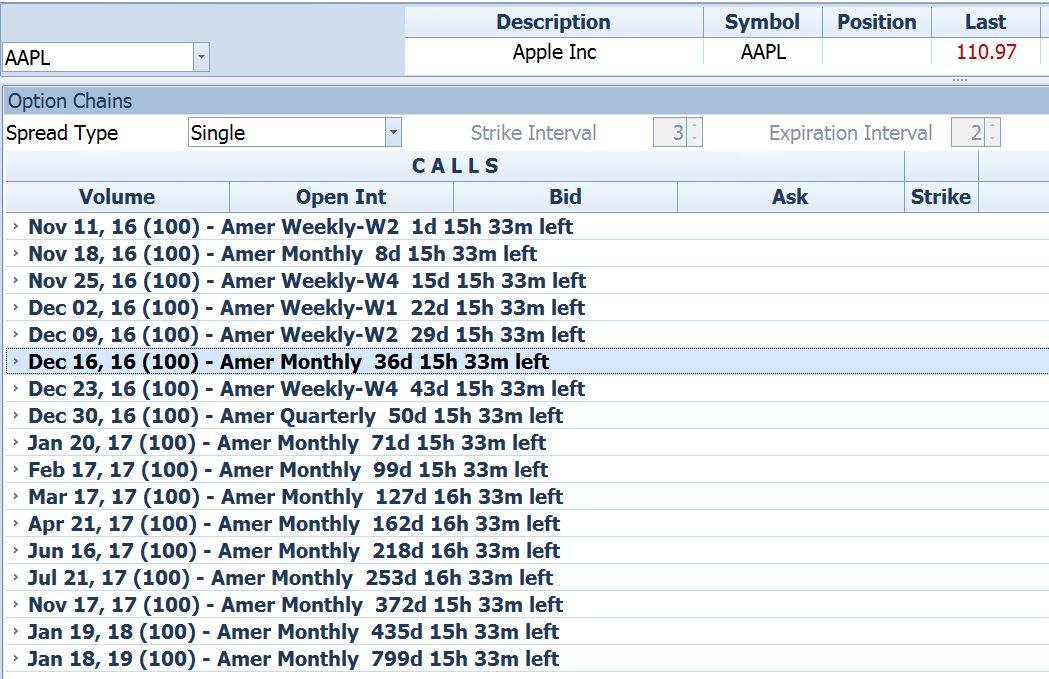Option trading can be a great way to make money, offering strategies for traders from beginner level to the most advanced.
Before we can begin to make it work, though, there a few basic things that we need to understand.
What You Need to Understand About Options Trading
A listed stock option must be one of only two things:
It sounds simple with only two elements, but then so do the numbers 0 and 1. And with just those two digits, in different combinations, anything and everything in the universe can be represented (that’s what digital data is).
The possibilities with options are not quite that limitless, but close enough.
What Is a Listed Stock Option?
The “listed” part of listed options means that they trade (are “listed”) on centralized option exchanges. The exchanges specify the standardized terms of every option contract. There are several exchanges, and all are coordinated through a central clearing house. The clearing house arrangement provides a guarantee that every option buyer’s right to buy or sell is absolute.
Here is the breakdown of the elements of an option:
For both puts and calls, there is an underlying asset. That asset is almost always 100 shares of the stock of a given company, or of an exchange-traded fund. (There are options on things other than stocks and ETFs, but we’ll stick to those for now). For example, the underlying asset might be 100 shares of Apple stock.
For each underlying asset, there are many different options available. The two things that differentiate one Apple call from another Apple call, or one Apple put from another Apple put, are the price at which they give the right to buy or sell (called the strike price); and the duration of that right, indicated by the option’s expiration date, or expiry date if you like.
The list of available options is called an option chain, a picture of which is shown below:

A Simple Explanation of Options Calls and Puts
Above is a small sample of the options for Apple stock for just one expiration date, December 16, 2016. The Strike column in the center of the chain lists the strike prices that are available. The columns to the left of the Strike column refer to call options, while those on the right refer to puts.
On this page, there are strikes listed from $70 per share to $160 per share. A call option with a Strike of 110 gives the right to buy 100 shares of Apple stock at $110 per share. In this list that right is good through December 16. A call at the 115 strike gives the right to buy the stock at $115 a share, and so on.
People buy call options if they believe that Apple stock will go up in price. Once you have paid for a call option (you can buy one for the price shown in the Ask column, times 100), you then have the right buy the stock at that price no matter what the market price of Apple stock is at some future date between now and expiration. You are not obligated to buy the stock, but you may whenever you want, at any time through the expiration date. This will allow you to make money if Apple stock goes up while risking only a small fraction of the stock price.
People buy put options if they believe that the price of a stock will go down. A put at the 110 strike, for example, would give you the right to sell Apple stock for $110 per share, even if the stock went down to a much lower price, or even to zero. If you own the stock, this is like a guaranteed stop-loss. If you don’t own the stock, but just believe that the stock will go down and want to make money if it does, you can also buy puts. If you bought these puts and then Apple went down to $100, you could make money by buying the Apple stock at $100, then exercising your option and thereby selling the stock at $110.
Besides the options listed above that expire in December, there are other expiration dates available as shown below:

The expiration dates above range from November 11, 2016, which was just 2 days away when this article was written; to January 18, 2019, more than two years away. For every one of those expiration dates there is a list of available option strike prices that is similar to the one in the first diagram above, altogether there are over 1200 options for Apple stock.
By choosing the right options for your market outlook and current market conditions, you can construct option positions to protect stock that you have; or to make money from movement in a stock that you don’t have (up or down – as long as you are right about that direction) , or even to make money from a lack of movement. Once you understand the world of options, all these possibilities are open.
Russ Allen can be contacted on this link: Russ Allen
Before we can begin to make it work, though, there a few basic things that we need to understand.
What You Need to Understand About Options Trading
A listed stock option must be one of only two things:
- Call option – A right to buy 100 shares of a stock at a fixed price, good through a definite future date
- Put option – A right to sell 100 shares of a stock at a fixed price, good through a definite future date
It sounds simple with only two elements, but then so do the numbers 0 and 1. And with just those two digits, in different combinations, anything and everything in the universe can be represented (that’s what digital data is).
The possibilities with options are not quite that limitless, but close enough.
What Is a Listed Stock Option?
The “listed” part of listed options means that they trade (are “listed”) on centralized option exchanges. The exchanges specify the standardized terms of every option contract. There are several exchanges, and all are coordinated through a central clearing house. The clearing house arrangement provides a guarantee that every option buyer’s right to buy or sell is absolute.
Here is the breakdown of the elements of an option:
For both puts and calls, there is an underlying asset. That asset is almost always 100 shares of the stock of a given company, or of an exchange-traded fund. (There are options on things other than stocks and ETFs, but we’ll stick to those for now). For example, the underlying asset might be 100 shares of Apple stock.
For each underlying asset, there are many different options available. The two things that differentiate one Apple call from another Apple call, or one Apple put from another Apple put, are the price at which they give the right to buy or sell (called the strike price); and the duration of that right, indicated by the option’s expiration date, or expiry date if you like.
The list of available options is called an option chain, a picture of which is shown below:

A Simple Explanation of Options Calls and Puts
Above is a small sample of the options for Apple stock for just one expiration date, December 16, 2016. The Strike column in the center of the chain lists the strike prices that are available. The columns to the left of the Strike column refer to call options, while those on the right refer to puts.
On this page, there are strikes listed from $70 per share to $160 per share. A call option with a Strike of 110 gives the right to buy 100 shares of Apple stock at $110 per share. In this list that right is good through December 16. A call at the 115 strike gives the right to buy the stock at $115 a share, and so on.
People buy call options if they believe that Apple stock will go up in price. Once you have paid for a call option (you can buy one for the price shown in the Ask column, times 100), you then have the right buy the stock at that price no matter what the market price of Apple stock is at some future date between now and expiration. You are not obligated to buy the stock, but you may whenever you want, at any time through the expiration date. This will allow you to make money if Apple stock goes up while risking only a small fraction of the stock price.
People buy put options if they believe that the price of a stock will go down. A put at the 110 strike, for example, would give you the right to sell Apple stock for $110 per share, even if the stock went down to a much lower price, or even to zero. If you own the stock, this is like a guaranteed stop-loss. If you don’t own the stock, but just believe that the stock will go down and want to make money if it does, you can also buy puts. If you bought these puts and then Apple went down to $100, you could make money by buying the Apple stock at $100, then exercising your option and thereby selling the stock at $110.
Besides the options listed above that expire in December, there are other expiration dates available as shown below:

The expiration dates above range from November 11, 2016, which was just 2 days away when this article was written; to January 18, 2019, more than two years away. For every one of those expiration dates there is a list of available option strike prices that is similar to the one in the first diagram above, altogether there are over 1200 options for Apple stock.
By choosing the right options for your market outlook and current market conditions, you can construct option positions to protect stock that you have; or to make money from movement in a stock that you don’t have (up or down – as long as you are right about that direction) , or even to make money from a lack of movement. Once you understand the world of options, all these possibilities are open.
Russ Allen can be contacted on this link: Russ Allen
Last edited by a moderator:
